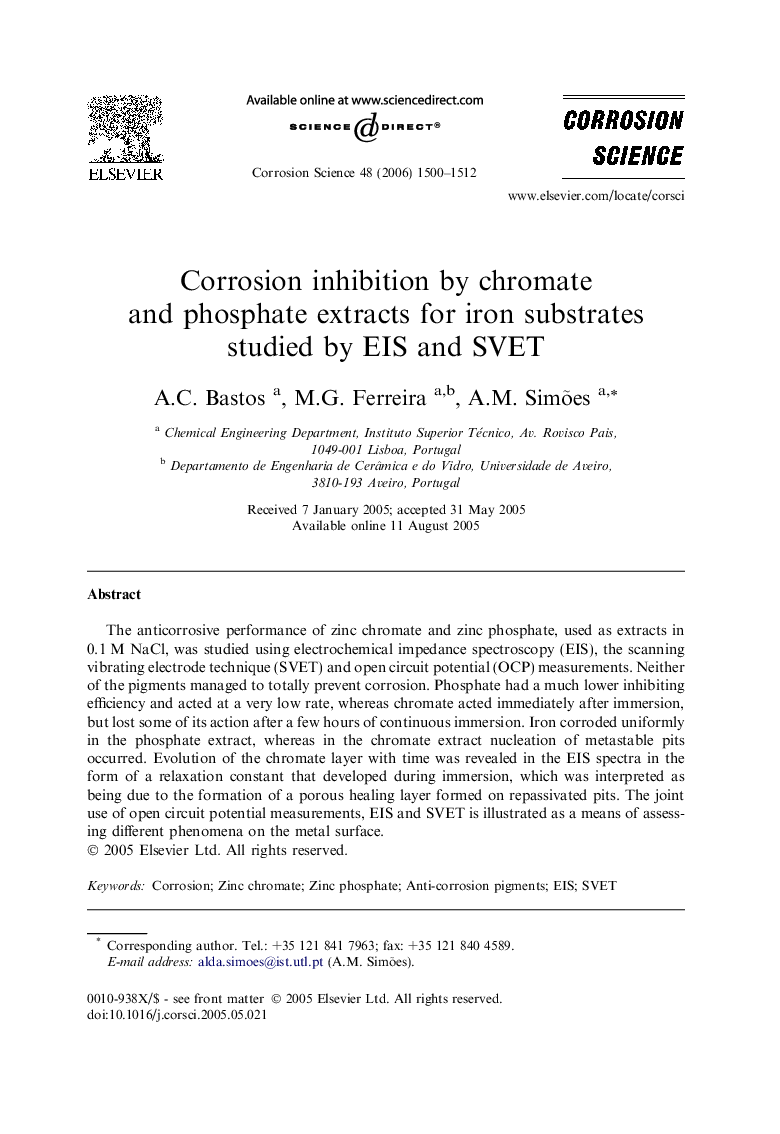| Article ID | Journal | Published Year | Pages | File Type |
|---|---|---|---|---|
| 1472482 | Corrosion Science | 2006 | 13 Pages |
The anticorrosive performance of zinc chromate and zinc phosphate, used as extracts in 0.1 M NaCl, was studied using electrochemical impedance spectroscopy (EIS), the scanning vibrating electrode technique (SVET) and open circuit potential (OCP) measurements. Neither of the pigments managed to totally prevent corrosion. Phosphate had a much lower inhibiting efficiency and acted at a very low rate, whereas chromate acted immediately after immersion, but lost some of its action after a few hours of continuous immersion. Iron corroded uniformly in the phosphate extract, whereas in the chromate extract nucleation of metastable pits occurred. Evolution of the chromate layer with time was revealed in the EIS spectra in the form of a relaxation constant that developed during immersion, which was interpreted as being due to the formation of a porous healing layer formed on repassivated pits. The joint use of open circuit potential measurements, EIS and SVET is illustrated as a means of assessing different phenomena on the metal surface.
